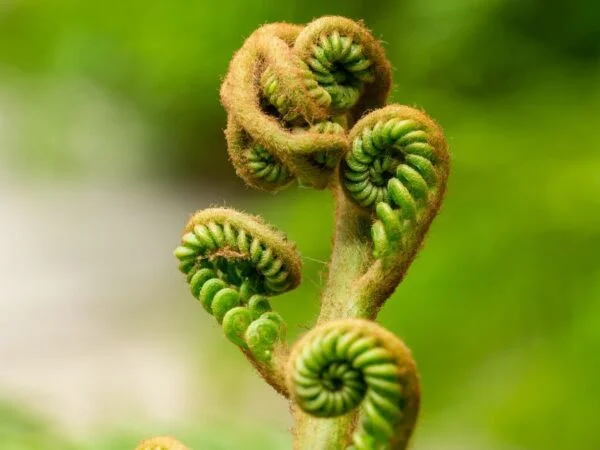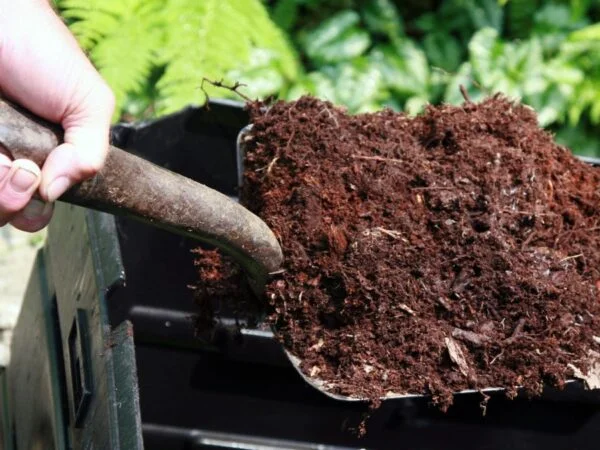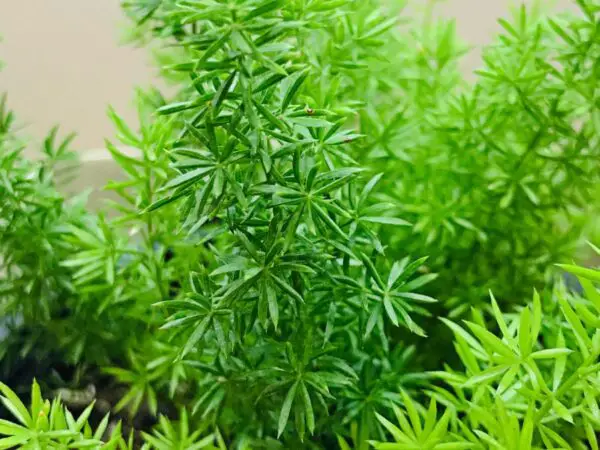
Are you wondering, "Why is my fern turning yellow?" Don't worry, I've got you covered! Understanding the reasons behind your fern's yellowing leaves is crucial for restoring its health and vibrancy.
There are several common reasons why your fern might be turning yellow. Firstly, it could be due to overwatering, which leads to root rot and nutrient deficiencies. Ensure proper drainage and allow the soil to dry out slightly between waterings. Secondly, inadequate light can cause yellowing. Ferns typically thrive in indirect, moderate light conditions. Lastly, check for pests and diseases, as they can also contribute to yellowing foliage. By addressing these factors and providing optimal care, you can help your fern regain its lush green color and vitality.
If you're still puzzled about your fern's yellowing leaves, fear not! There's more insightful advice and tips available to help you troubleshoot and care for your beloved plant. Whether it's adjusting watering schedules, repositioning for better light, or implementing pest control measures, I'm here to guide you towards successfully nurturing your fern back to its verdant glory.
Key Takeaways
- Check Watering Practices: Ensure you are not overwatering your fern, as this can lead to yellowing leaves. Stick to a consistent watering schedule and allow the soil to partially dry out between waterings.
- Provide Adequate Light: Place your fern in a location with indirect sunlight to prevent yellowing. Avoid exposing it to direct sunlight, which can scorch the leaves.
- Consider Fertilization Carefully: Use a balanced fertilizer specifically formulated for ferns, and avoid overfertilizing, as this can cause yellowing. Follow the recommended dosage on the fertilizer package.
- Monitor Temperature and Humidity: Maintain a stable environment with moderate temperatures and high humidity levels for your fern to thrive. Sudden temperature changes or dry air can stress the plant and lead to yellow leaves.
- Regularly Prune and Care: Remove any yellow or dead fronds promptly to encourage new growth. Keep the plant clean and free from debris to prevent pests and diseases that can contribute to yellowing.
- Implement Preventative Measures: Keep an eye out for signs of stress or yellowing early on to address any issues promptly. Adjust care practices as needed based on the condition of your fern to maintain its health and vibrancy.
Causes of Yellowing
Watering Issues
Adjust watering frequency to meet the fern's needs, preventing overwatering. Regularly check soil moisture and opt for a well-draining pot.
Nutrient Deficiency
Ensure balanced fertilization for optimal growth, watching for signs like yellow leaves. Consider enriching the soil with essential nutrients using organic compost.
Light Exposure
Provide adequate light for healthy foliage, avoiding direct sunlight that can harm leaves. Rotate the fern to ensure even light distribution.
Temperature Stress
Maintain consistent temperatures within the ideal range to prevent stress-induced yellowing. Shield the fern from sudden temperature fluctuations and monitor indoor temperatures diligently.
Watering Practices
Adjusting Frequency
Adjust watering frequency based on seasonal changes. Monitor humidity levels for accurate watering needs. Consider pot size and soil type adjustments.
Technique Tips
Water the fern at the base to avoid excessive leaf wetting. Properly drain excess water to prevent root rot. Occasionally mist leaves to increase humidity levels.
Fertilization Strategies
Right Fertilizer
Choosing a balanced fertilizer specifically designed for ferns is crucial for their health. Opt for slow-release fertilizers as they provide nutrients gradually over time, promoting steady growth. Follow the recommended dosage instructions on the fertilizer package to avoid overfertilizing, which can harm the fern.
Application Method
When applying fertilizer, ensure it is spread evenly across the soil surface to guarantee all parts of the fern receive nutrients. After fertilizing, remember to water the fern thoroughly. This helps in nutrient absorption and prevents any potential burn from concentrated fertilizer. Make sure there is no direct contact between the fertilizer and the fern's leaves, as this can cause damage.
Light Requirements
Ideal Exposure
Position the fern in a spot with indirect sunlight to prevent yellowing of the leaves. Ensure proper lighting without harsh rays damaging the plant. Artificial lighting can be used in areas with low natural light.
Seasonal Adjustments
Adjust care routines according to seasonal changes to maintain the fern's health. Increase humidity levels during dry seasons to prevent leaf yellowing and monitor temperature changes for optimal growth.
Temperature and Humidity

Optimal Conditions
Creating optimal conditions for your fern involves balancing light, temperature, and humidity. Maintaining a consistent environment is crucial to promote healthy foliage growth. Consider using a humidifier to regulate indoor humidity levels effectively.
Environmental control devices play a key role in regulating the temperature and humidity levels for your fern. Regularly monitoring environmental conditions helps prevent stress on the plant. Implement shading techniques to shield the fern from excessive sunlight exposure.
Environmental Control
- Use environmental control devices
- Monitor conditions regularly
- Implement shading techniques
Pruning and Care
When to Prune
Prune yellow leaves promptly to promote new growth. Removing dead or damaged fronds during active growing seasons helps maintain the fern's health. Avoid excessive pruning to ensure overall fern health.
Pruning Techniques
Use clean, sharp tools for precise pruning of ferns. Cut yellow leaves close to the base without harming healthy foliage. It is essential to disinfect pruning tools to prevent the spread of diseases in your plant.
Encouraging Growth

New Growth Tips
Growth in ferns can be stimulated effectively by pruning selectively to remove yellowing fronds. This process encourages the plant to focus its energy on producing new, healthy growth. Providing optimal care conditions, such as adequate sunlight and humidity levels, is crucial for supporting the development of new fronds. By monitoring the fern closely after pruning, you can observe signs of regrowth, indicating that the plant is responding positively to the care provided.
To promote new growth, consider these tips:
- Prune selectively: Remove yellow or damaged fronds to redirect the plant's energy towards healthy growth.
- Optimal care conditions: Ensure your fern receives adequate sunlight and consistent moisture levels to support new frond development.
- Monitor closely: Keep a close eye on the plant post-pruning to observe any signs of regrowth, indicating a positive response.
Remember that each fern species may have specific requirements for optimal growth, so it's essential to research and understand the particular needs of your plant. By following these tips and providing attentive care, you can encourage vibrant and lush growth in your ferns.
Preventative Measures
Pot and Drainage
When caring for your fern, it's crucial to select a pot with proper drainage holes to prevent waterlogging. This allows excess water to escape, avoiding root rot. If you notice the roots are overcrowded or distressed, consider repotting the fern into a larger container. Opt for a well-draining soil mix that facilitates healthy root development and prevents water retention.
Consistent Routine
Maintain the health of your fern by establishing a consistent care routine. Regularly check on the plant's condition to catch any issues early on. Create and adhere to a strict schedule for watering and fertilizing to ensure the fern receives adequate nourishment without overdoing it.
Soil and Environment
Soil Quality
Select a well-draining soil mix to ensure proper water drainage for your fern's health. Opt for a mix that is rich in organic matter, promoting essential nutrients uptake. Check the soil pH levels periodically to maintain an environment conducive to your fern's growth. If you notice a decline in soil quality, consider repotting the fern to provide fresh, nutrient-rich soil.
Environmental Stability
Maintain a stable environment by controlling light exposure, ensuring it receives adequate but not excessive sunlight. Monitor the temperature levels to keep it within the ideal range for ferns' growth. Regulate the humidity levels, as ferns thrive in environments with moderate humidity. Shield your fern from drafts and sudden changes in its surroundings to prevent stress. Implement measures such as using a humidifier or pebble tray to stabilize the environment for consistent growth.
Closing Thoughts
Understanding the reasons behind your fern turning yellow is essential for its well-being. By adjusting watering practices, ensuring proper light exposure, and maintaining optimal temperature and humidity levels, you can help your plant thrive. Implementing appropriate fertilization strategies, pruning techniques, and preventive measures will contribute to its overall health. Remember to create a suitable environment with the right soil composition to support growth. Taking these steps will not only revive your yellowing fern but also promote its lush greenery.
Now that you have insights into caring for your fern, take action to apply these tips and watch your plant flourish. Share this knowledge with fellow plant enthusiasts to spread the joy of nurturing healthy ferns together.
Frequently Asked Questions
Why is my fern turning yellow?
Ferns turn yellow due to overwatering, insufficient light, or poor drainage. Check watering practices, ensure proper light exposure, and use well-draining soil to prevent yellowing.
How often should I water my fern?
Water your fern when the top inch of soil feels dry. Ensure proper drainage to prevent overwatering, which can lead to root rot and yellowing leaves.
What type of fertilizer should I use for my fern?
Use a balanced liquid fertilizer diluted to half strength. Apply every 2-4 weeks during the growing season to provide essential nutrients for healthy fern growth.
How much light does a fern need?
Ferns prefer indirect light or dappled shade. Avoid direct sunlight as it can scorch the leaves. Place your fern in a location with bright, filtered light for optimal growth.
Should I prune my fern regularly?
Prune dead or yellowing fronds to encourage new growth and maintain the plant's health. Use clean scissors to trim back any damaged foliage, promoting a tidy appearance and vigorous growth.
Image Source: Paid image from CANVA





